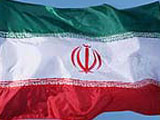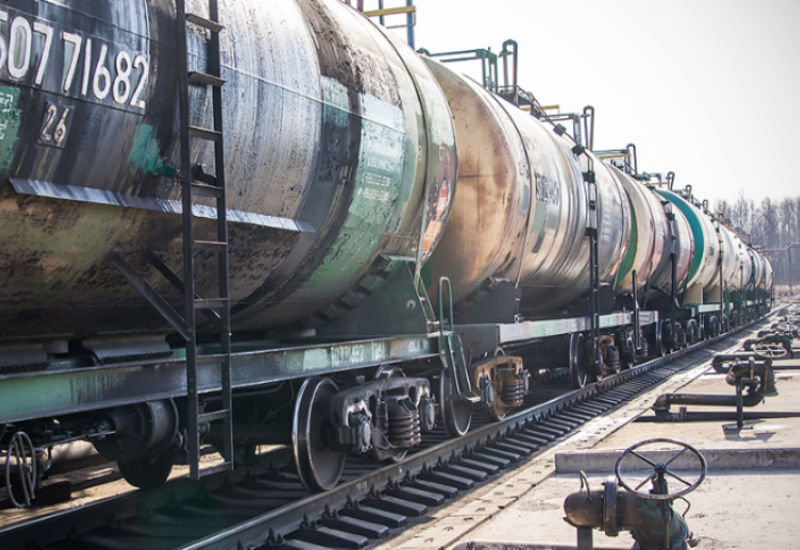|
|
TODAY.AZ / Politics
Officials: Iran has assembled 2 small uranium-enriching units underground
06 February 2007 [02:54] - TODAY.AZ

The move potentially opens the way for larger scale enrichment operations that could be used to create the fissile payload in nuclear warheads. Iranian leaders have repeatedly said the Natanz underground hall would house first 3,000 centrifuges and ultimately 54,000 of the machines.
It also poses a direct challenge to the Security Council, which late last month imposed limited sanctions targeting programs and individuals linked to Tehran's nuclear and ballistic missile programs — and warned of stricter penalties within 60 days unless Iran freezes enrichment.
Speaking separately — and demanding anonymity because their information was confidential — a diplomat accredited to the Vienna-based International Atomic Energy Agency and a U.S. official said that two separate "cascades" of 164 centrifuges each had been set up in recent days.
The likely next step was "dry testing" — running the linkups without uranium gas inside — to be followed by attempts to spin and re-spin the gas. The process, known as enrichment, can be used to fuel nuclear power plants. But at higher levels of enrichment the material can be used for the core of nuclear warheads.
The news had been widely expected. Both the Iranian leadership and the Vienna-based IAEA, which is the U.N.'s nuclear watchdog agency, had said recently that Tehran would start assembling the machines this month.
Comments last week by Iranian President Mahmoud Ahmadinejad signaled that Iran would begin the installation before Feb. 11 — the final day of nationwide celebrations in memory of the 1979 Islamic revolution.
In another sign that Tehran was forging ahead with plans to create a large-scale "pilot plant" of 3,000 centrifuges running in series, U.N. officials late last week told the AP that that piping, cables, control panels and air conditioning systems had been installed at Natanz to support such a number of machines.
Former U.N. nuclear inspector David Albright, whose Washington-based Institute for Science and International Security tracks Iran's nuclear activities, said Tehran was likely capable of hooking up 300 to 500 centrifuges a month, allowing it to reach its goal of a 3,000-machine linkup within this year.
Such an operation — the cornerstone of what the Iranians say will eventually be a large-scale complex of 54,000 centrifuges — could be used to produce fissile material for two bombs a year.
But Albright suggested that the tougher part still lay ahead — running them for prolonged periods without breakdowns, something the Iranians have only had limited success with in aboveground experiments at Natanz over the past year.
The International Institute for Strategic Studies, a London-based think tank, last week estimated that Iran was two to three years away from having the capacity to build a nuclear weapon. The head of U.S. national intelligence, John Negroponte, has spoken of a four-year period.
Iran says it wants to use the technology to generate nuclear power, but the U.S. and other nations believe Tehran is intent on using the process to develop weapons. Albright said Iran could opt to create a large stockpile of low-enriched uranium that it could then use to "break out" and re-enrich to weapons grade at any time.
IAEA officials had no comment. A U.N. official familiar with the agency's probe of Tehran's nuclear program said, however, that when IAEA inspectors last visited Natanz last week, no cascades had been assembled underground.
The U.S. State Department did not confirm or deny the reports Monday, saying only that it would push for "incremental" U.N. Security Council sanctions against Iran if Tehran authorities continue to ignore council demands for suspension of the country's uranium enrichment program.
Spokesman Sean McCormack said that Iran appears to be continuing "down the path of isolation."
There has been speculation Tehran might be content to install several cascades and then temporarily freeze its activities at Natanz, hoping to be able to negotiate with a strengthened hand.
But a senior diplomat who represents his country at the IAEA said recent conversations with Iranian officials showed no signs of such a strategy.
"We declared we're going to have 3,000 and we are going to have 3,000," he said, paraphrasing an Iranian official on Tehran's plans for Natanz this year.
Even before starting subterranean work, Iran already had two experimental cascades of 164 centrifuges each, as well as several partially assembled cascades, all above ground at Natanz. They have been the subject or regular inspections by IAEA teams, although their authority has been restricted for a year, since Tehran withdrew broader inspecting rights after its nuclear file was referred to the U.N. Security Council. The Associated Press
/The International Herald Tribune/
URL: http://www.today.az/news/politics/35982.html
 Print version
Print version
Connect with us. Get latest news and updates.
See Also
- 17 December 2025 [11:33]
President Ilham Aliyev meets with President of United Arab Emirates in Abu Dhabi - 16 December 2025 [12:14]
Establishment of Embassy in Bahrain reflects advancement of bilateral relations - President Ilham Aliyev - 16 December 2025 [11:33]
Dynamic socio-economic development places strategic tasks before trade unions, President - 16 December 2025 [11:14]
President Ilham Aliyev addresses participants of 8th Congress of Azerbaijan Trade Unions Confederation - 16 December 2025 [11:11]
Hornet's nest has been stirred up: how topic of Western Azerbaijan scared revanchists - 15 December 2025 [14:13]
President Ilham Aliyev approves Azerbaijan Business Development Fund OJSC's Supervisory Board composition - decree - 15 December 2025 [12:12]
Azerbaijani oil scares demagogues in Yerevan: where is common sense? - 15 December 2025 [10:10]
Pashinyan once again spoke out against Garegin - 14 December 2025 [14:19]
Azerbaijan participates in 11th UNAOC Global Forum in Riyadh - 14 December 2025 [12:20]
Azerbaijan’s Emergency Ministry continues fire safety awareness campaign in liberated territories
Most Popular
 Hornet's nest has been stirred up: how topic of Western Azerbaijan scared revanchists
Hornet's nest has been stirred up: how topic of Western Azerbaijan scared revanchists
 Azerbaijani oil scares demagogues in Yerevan: where is common sense?
Azerbaijani oil scares demagogues in Yerevan: where is common sense?
 Pashinyan once again spoke out against Garegin
Pashinyan once again spoke out against Garegin
 South Korea to enforce new AI regulations amid industry concerns
South Korea to enforce new AI regulations amid industry concerns
 Memorial exhibition in honor of Rasim Nazirov opens in Baku
Memorial exhibition in honor of Rasim Nazirov opens in Baku
 Energy Ministry signs new contract with US-based White & Case LLP
Energy Ministry signs new contract with US-based White & Case LLP
 Zelensky signals willingness to trade NATO bid for strong security guarantees
Zelensky signals willingness to trade NATO bid for strong security guarantees
